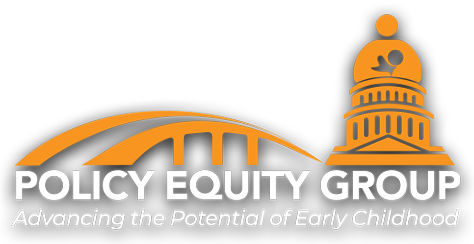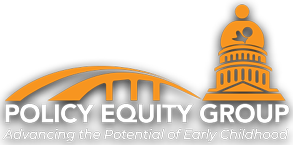Today in Congress, the Select Subcommittee on the Coronavirus Crisis is hosting a hearing on the ongoing child care crisis and its impact for American families and the economy. It’s one of many events and headlines that have emphasized the importance of child care to our country’s recovery from COVID-19.
But, when reading the winning applications of the Build Back Better (BBB) Regional Challenge – a $1 billion grant program designed to support the country’s economic recovery from COVID-19 – you wouldn’t know that child care plays a critical role in economic development. Of the 60 finalists announced in December, only eight (13 percent) explicitly included child care as an integral part of their plan to revitalize their disinvested communities while promoting equity. Each of these Phase 1 finalists received a $500,000 planning grant to prepare a Phase 2 application that could win them up to $100 million to invest toward their region’s economic growth.
What is most concerning about this finding is that the request for applications specifically mentions the importance of child care as a “wrap around service.” It also discusses how finalists may propose projects that focus on the physical and nonphysical infrastructure in “creating the conditions for businesses to grow and expand.”
Why are economic development organizations overlooking child care?
Interviews with 11 economic development and child care administrators in five states shed light on the disconnect between economic development goals and efforts to improve the quality and capacity of the country’s child care system. The interviews revealed three primary reasons for this missed connection.
- The lack of pre-existing relationships and common goals among the individuals working in economic development and child care.
Historically, economic development agencies have not focused on child care, and similarly, child care administrators have not seen promoting economic development as a primary goal of their work. As one economic development administrator put it, “Literally, I’m not sure the words ‘child’ and ‘care’ were heard together in the first 15 years I was in economic development.”
At the same time, child care administrators focus on mitigating the high costs of care for low-income families and enhancing the quality of programs to promote child development and school readiness. Unfortunately, state child care administrators do not see coordinating with economic development organizations as a way of meeting these goals.
With few exceptions, states do not have governance structures that bring child care and economic development administrators to the same table.
- Current child care policy fails to support the goals of economic development.
Economic development organizations work to bring good paying jobs to their regions. Despite the fact that even middle-income families struggle with the cost of child care, and that decisions about whether to enter the labor force are often impacted by these child care costs, the nation’s current child care policies do a bad job supporting workers who fill the jobs that economic development organizations are trying to attract.
For example, the country’s primary federal child care program — the Child Care and Development Block Grant — caps states’ income eligibility at 85 percent of the state’s median income, with many states setting income eligibility lower than the maximum federal threshold. The fact that income eligibility for child care support is often lower than the wages of the jobs economic development organizations want to bring to their region contributes to the disconnect between economic development and child care.
Compounding this problem is the fact that child care administrators have limited opportunities to use child care funding to build the capacity of child care systems and target capacity initiatives to specific geographic areas. Changes to child care policy that are pending in Congress would significantly increase income eligibility thresholds and support capacity building in an effort to solve these fundamental challenges.
- Child care stakeholders lack the data that economic development organizations need for regional economic planning.
To understand how the capacity of the child care infrastructure might need to expand to meet the needs of a growing regional economy, economic development organizations require information about the number and types of child care slots available in a specific geographic area, the hours in which the slots are available, the quality of those slots, the costs of care, and the preferences of working parents for specific forms of child care.
These data points paint a picture of the extent to which affordable, high-quality child care is available to meet the needs and preferences of workers in a growing regional economy. The lack of up-to-date, accurate, and easily accessible data makes it difficult to incorporate child care capacity into economic development planning and to understand the significance of child care in supporting economic development.
Bridging the Divide
The good news is that we can start to bridge this gap through collaboration, coalition building and the creation of shared goals in the Build Back Better Regional Challenge final applications. Child care stakeholders can leverage the grant to forge new partnerships that create a child care system that supports affordable, high-quality care that promotes economic growth. Here’s how to start:
- Engage the Build Back Better Regional Challenge finalists. Right now, finalists are using their initial grants to strengthen their projects and will resubmit applications for Phase 2 by March 15. (Find out who they are here.) They have excelled at building diverse stakeholder coalitions, yet few include representatives from the child care sector. Finalists can strengthen their collaborative efforts by including the child care perspective, which will help improve project outcomes for working parents, strengthen projects focused on wrap-around services, and identify new funding streams to support sustainability.
Equally important, integrating child care advances finalists’ applications around equity and diversity. Supporting child care providers’ entrepreneurship and economic mobility inherently targets historically marginalized groups. Nearly all (95 percent) of child care workers are women, and they are disproportionally people of color. As the nation’s primary caregivers, women have also borne the brunt of lost employment and earnings during the pandemic. During the depths of the pandemic, labor force participation rates among women were the lowest since 1985.
- Use language that highlights the shared goals of economic development and child care. Economic development organizations have three primary goals: (1) to retain currently operating businesses in their geographic area; (2) to grow these businesses; and (3) to attract new businesses. To meet these goals, economic development organizations attract businesses by highlighting key contextual characteristics of their geographic area, most notably a highly qualified workforce. Child care allows businesses to access a portion of the workforce that would otherwise be unavailable. While “supporting access to labor” is not how most child care stakeholders talk about their work, this is precisely what makes child care so important to those working in economic development. In this way, supporting the workforce is a shared goal of economic development and child care.
Child care is critical to economic development. Even before the pandemic, the U.S. Chamber of Commerce Foundation coined the nation’s lack of ECE capacity as our “billion-dollar problem.” Their research found that states lost an average of $1 billion in revenue because workers — particularly those with children under three — couldn’t access child care.
Creating a stronger connection between economic development and child care is long past due.
Sincerely,
The Policy Equity Group Team
March 2, 2022
[Check back in with us! We are publishing a policy brief on this issue later this month. Sign up for our mailing list to receive it and other updates.]


